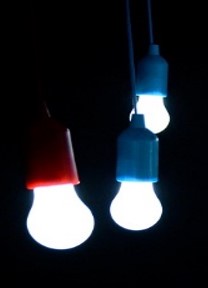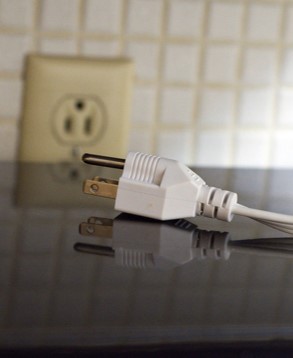From investing in high quality tools to writing more product reviews, Klein Tools’ New Year’s resolutions established possible goals for the professional tradesperson. Today, we have one more to add to our list:
Practice energy efficiency at home.
According to the Energy Information Administration, the average American household spends roughly $112 a month on energy bills. By practicing “green” techniques in your house, you may be able to cut your own energy costs while also combatting global climate change and preserving natural resources.

January 10 was National Cut Energy Costs Day, and in celebration of this important initiative, we’ve highlighted some techniques and helpful tools to help you practice energy efficiency at home, including investing in LED bulbs and unplugging your devices.
Lower Your Lights
 Simply replace your incandescent bulbs with residential LEDs, and you will notice a difference in your energy usage. LEDs use 75 percent less energy and last up to 25 times longer than traditional bulbs, making your personal savings goal that much closer.
Simply replace your incandescent bulbs with residential LEDs, and you will notice a difference in your energy usage. LEDs use 75 percent less energy and last up to 25 times longer than traditional bulbs, making your personal savings goal that much closer.- Leave your blinds open during cold, winter months, and allow the sun to not only provide natural light inside but also help keep your home heated.
Kitchen Cool Down
- Keep lids on pots while heating, refrain from opening the oven door while in use and only run full dishwasher loads to optimize energy usage in these areas.
- Some habits, such as leaving the refrigerator door open while deciding what to eat, might be harder to break. Remember that the fridge consumes a lot of energy to keep items cool, and when the door is open, you’re wasting it.
 Check Your Tech
Check Your Tech
- Unplug as many electronics and small appliances as you can when they are not in use to eliminate “standby power.” Attributing to 5 to 10 percent of residential energy usage in the average U.S. household, standby power is when products consume energy even after being switched off.
- Most devices are fully charged after just a few hours. Remove your phone or tablet from its charger after they reach full battery to conserve energy by not overcharging.
As a whole, the electric industry has begun to evolve to support the rising demand in renewable energy sources, including solar panels, wind turbines, geothermal heat and more. Changes on an individual basis, however, are crucial to reducing energy consumption and greenhouse gas emissions globally.
Klein Tools found just a few areas in your home where you might be able to not only reduce your energy usage but also the cost of powering your home. There are so many other ways out there, and we invite you to explore your options to find the solutions that work best for your home and your family. Find something that works well? Share it with us on social media.
